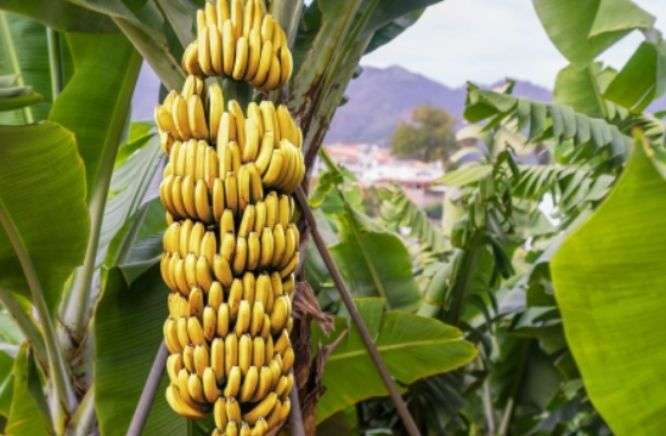
Most people can separate fruits and vegetables easily but distinguishing different types of fruits is less clear.
So, this article will tell you how a banana should be classified and whether a banana is a fruit or a berry.
The term “berry” is actually a botanical term, not a common English one when you go deeply.
Botany is weird, isn’t it?
Proof of Bananas are Berries
Even the blackberries, mulberries, and raspberries are not the berries. Instead, bananas, pumpkins, avocados and cucumbers come under berries.
To be a berry, the fruit must be developed from one ovary and they should have soft skin and have a fleshy part in the middle.
Bananas contain one or more seeds but we generally don’t notice the seeds in the bananas due to their small size. So, bananas fulfill all the criteria to be a berry botanically.
So, bananas are considered as berries botanically.
Why are bananas berries, but strawberries aren’t?
In the name of strawberry, there is a berry word at last even though the strawberry isn’t a real berry. The same applies to the raspberry or the blackberry.
Instead, bananas are considered berries when speaking scientifically. The same applies to the eggplants, grapes and oranges.
Fruits vs Berries
In a flowering plant, the fruit is the fleshy, sweet and seed-holding structures, also they are the reproductive organs of a flowering plant.
The main purpose of fruit is to spread seeds to new areas to increase its existence through availability where the plant may grow.
We can divide fruits into two types:
- Fleshy fruit: They include common fruits like apples, cherries, mangoes and bananas.
- Dry fruit: They include fruits like nuts, legumes and coconuts.
Types of Fleshy Fruit
Fleshy fruit can be further subdivided into 3 types. They are:
- Multiple or Aggregate Fruits
- Simple or Accessory Fruits
1. Aggregate Fruits (Drupelets)
Aggregate fruits are the fruits formed by many ovaries merging to become one flower or forms from many carpels that are all in the same flower.
These fruits include raspberry, blackberry, dewberry with a fleshy receptacle (green-part to support flower).
If your favorite fruits include pineapple, figs and mulberries, it means you’re a bit more adventurous and your favorite fruit is called a multiple fruit.
Aggregate fruits are also considered as “not-berries” fruits.
They are also called true fruits because their fruits come from ovaries.
2. Accessory Fruits (Achenes)
Accessory fruits are the fruits derived from another part of the flower such as the receptacle (strawberry) or the hypanthium (apples and pears) and most of the accessory fruits are simple fruits.
Accessory fruits are considered as “not-berries” fruits.
They are also sometimes called false fruits because their fruits don’t come from ovaries.
Therefore, we can say all berries are true fruit but all fruits are not berries.
Why does this happen and the most important thing is what makes a berry a berry?
To be a berry, the fruit must have seeds and pulp where pulp is accurately called “pericarp” i.e., developed from the ovary of a flower.
Pericarps Subdivision
Berries including all the fruits’ pericarps are subdivided into 3 distinctive fleshy layers, they are:
- Exocarp: The word “Exo” itself means the outside part, so exocarp is the outer skin of the fruit. We often eat exocarp of berries like grapes but not of bananas.
- Mesocarp: The word “Meso” itself means center or middle part, so the mesocarp is the part of the fruit that we usually eat. For example, we love to eat yummy parts of an apple or the bulk of a plum. Although in citrus fruits, we can see mesocarp of white, sort of inner-peel that we usually detach.
- Endocarp: The word “Endo” itself means inside part, so the endocarp is the nearest layer that covers the seed. In some fruits, it is in core or stony shape but in fruits like bananas, we don’t care about it because it is literally the membrane bred to be thin. In citrus, it holds the juicy part of the fruit like in orange.
If almost every fruit has these 3 layers, then what makes berries special?
The reason is due to the nature of their endocarps where berries have thin and fleshy pericarps.
Of course, these rules are flexible (not rigid) because even watermelons and citrus fruits are the berries but they never possess thin skins.
So, if your dearest fruit isn’t a berry, then what might it be?
To know, this depends upon the condition which type of endocarp it has. Some conditions are:
- Thick Hard Endocarp: So, if your favorite fruit has thick-hard endocarp, it’s likely a Drupe. Drupe is a vey common and fantasy term for a stone fruit. This bunch includes fruits like apricots, dates, avocados, mangoes, olives, cherries and most of the nuts.
- Core Endocarp: So, if your favorite fruit has core endocarp, it’s likely a Pome. This group encompasses apples and pears too.
FAQs
Are there other Surprising Fruits that are also berries?
You will be shocked to know that Bananas aren’t the only fruits which come under the subcategory of berries.
There are often some surprising fruits which are considered as berries. They are:
- Grapes
- Guavas
- Tomatoes
- Egg plants
- Avocados
- Peppers
- Kiwis
These fruits also develop flowers from only one ovary, have fleshy middle parts and contain multiple seeds like Bananas.
Since these all fruits fulfill criteria to be berries; so, they are also considered as berries botanically.
Why are we calling strawberries, raspberries and blackberries even though they don’t fall under berries?
This is because people started calling some fruits “berries” thousands of years before scientists came up with a scientific or precise definition for the word “berry”.
Today, berries are harder to define than others because there are several variations in the nomenclature of berries.
Mostly, when people listen to berries, they think of them as small, juicy, rounded, squishy fruit.
But the scientific classification of berries is even more complex, said Judy Jernstedt, a professor of plant sciences at the University of California.




![Moon Jellyfish has [ Hidden Secrets ] You don't know moon jellyfish](https://spaceupper.com/wp-content/uploads/2022/11/1-1-300x169.jpg)

